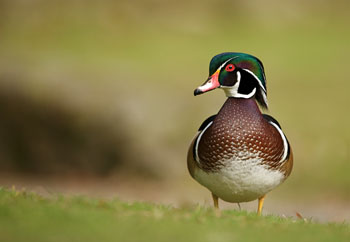 Wetlands are a precious resource. They moderate water flow by absorbing much of the surface water runoff from the land and then by slowly releasing it. This helps to reduce flooding and to sustain water flow during dry spells. Wetlands discharge water to the watershed, both to the atmosphere and to surface waters. They improve water quality because they trap sediment and soil-bound nutrients and contaminants.
Wetlands are a precious resource. They moderate water flow by absorbing much of the surface water runoff from the land and then by slowly releasing it. This helps to reduce flooding and to sustain water flow during dry spells. Wetlands discharge water to the watershed, both to the atmosphere and to surface waters. They improve water quality because they trap sediment and soil-bound nutrients and contaminants.
South Nation’s relatively flat terrain supports a variety of wetlands. They offer shelter to a great number of species—wetlands have the highest biodiversity of any landscape unit.
There are four main wetland types across the South Nation watershed: swamps, marshes, fens, and bogs. Each has unique characteristics that define which category it falls into and what ecological role it plays.
Swamp: a water body characterized by lowland seasonal flooding and is forested with woody plants such as trees and shrubs.
Marsh: typically permanent, treeless water bodies that feature grasses, sedges, cattails, and rushes.
Bog: an acidic, low mineral, peat-dominated wetland that often supports growth of sedges, shrubs, and sphagnum moss.
Fen: similar to a bog in that this wetland features peat, but instead has an alkaline chemistry and is fed by mineral-rich groundwater/surface water which supports grasses, sedges, rushes, and wildflowers.

